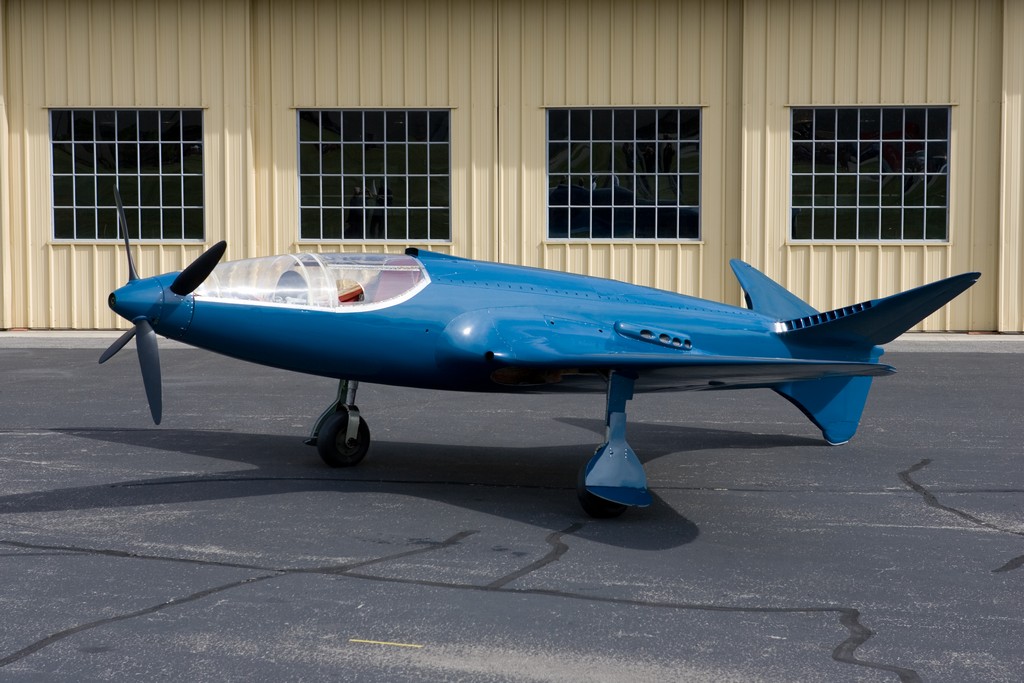Bugatti – Even faster in the air!
Jaap Horst
In this edition we presented you with loads of Bugatti’s, from 12.7 litre straight-eight engined super luxury cars, to the most recent Bugatti Chiron with 8 liter VR16, 1500 HP engine and well over 450 km/h. In 1937 Bugatti started the development of something that with over 750 km/h would have been very much faster than that. The subject here is not an automobile of course but the world’s most beautiful airplane of all time (yes, it is indeed the most beautiful plane of all times! Or do you know one more beautiful?). Ettore Bugatti was interested in much more than just automobiles, and after having developed various aero engines, especially during the first World War, he started developing one very special airplane.
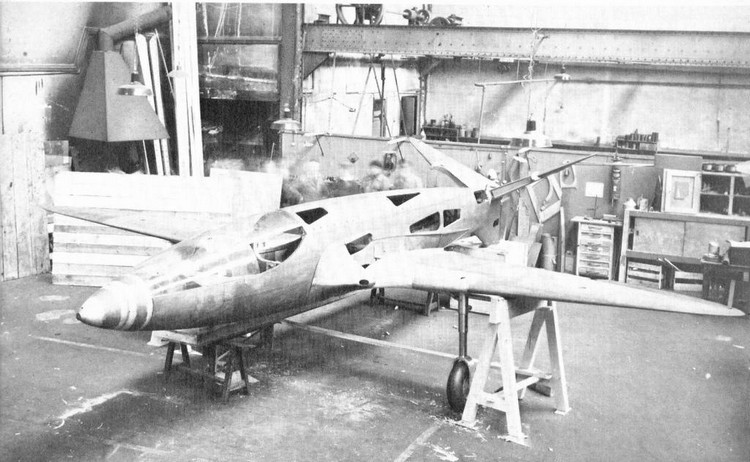
The airplane while it was being constructed in Paris, 1938 approximately. The staff is posing behind the airplane, but is not aware of the long shutter time.
In 1937 Ettore Bugatti asked the Belgian aeronautical engineer Louis de Monge if he would be able to design an airplane that could use Bugatti’s racing automobile engines to reach world record speeds. De Monge, who had been developing and building aircraft since 1907 but was working as an engineer for Belgian automobile company Imperia at the time, took about a week to answer the question affirmatively, and the two started developing the airplane. De Monge knew that approximately 1000 HP, which a pair of Bugatti engines was to develop at the very maximum, needed the minimum drag to reach high speeds. This was realized by reducing the fuselage cross section to the absolute minimum; the size of the pilot. To give the pilot at least some forward view without a canopy rising above the fuselage, he had to sit at the very front of the airplane, both engines one behind the other behind him. These engines were in fact the best Bugatti could produce at the time, each engine was a light-weight supercharged 4.7 liter supercharged straight-eight with many magnesium parts and a maximum power on the test-bed of 480 HP.
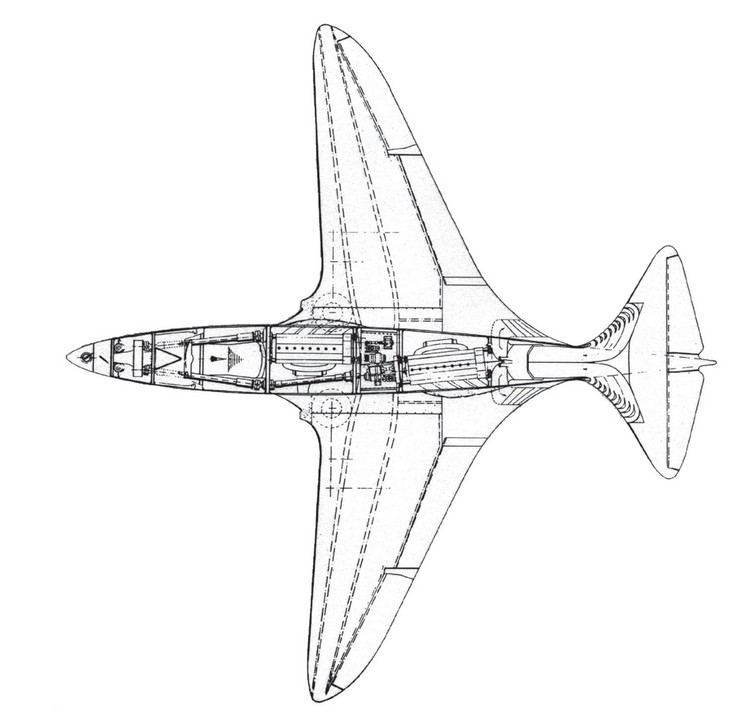
Plan view of the airplane, showing engine layour and forward swepped wings.
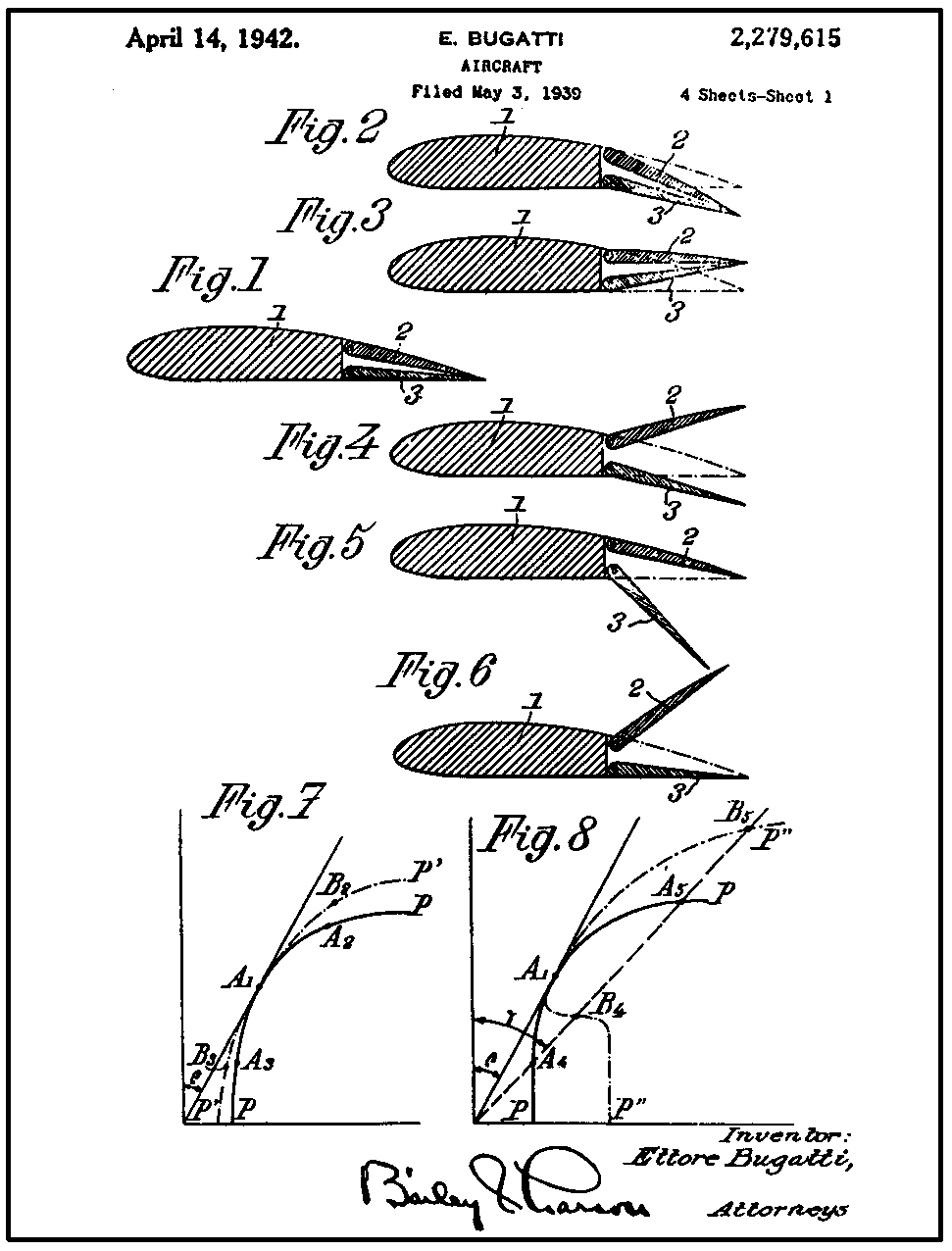
Working of the automatic flaps system, from the patent, with settings for increased lift (2) or reduced drag (3), air dives and even air brake.
Meanwhile, Ettore Bugatti managed to get a contract from the French Airforce ministry, with special bonuses for attaining speed records. The airplane was also attractive because it was largely made of the non-strategic material wood. The 100P airplane, as it is called (the 101P is similar, but with smaller wing span) was destined for record attempts only. The plane was too small and light to be even thinking about arming it. Of course a military version would be a logical follow-up, though nothing more than just one sketch is known about that. Bugatti however knew about the shortcomings of his automobile engines, and was designing a powerful V16 engine at the same time that the airplane was developed.
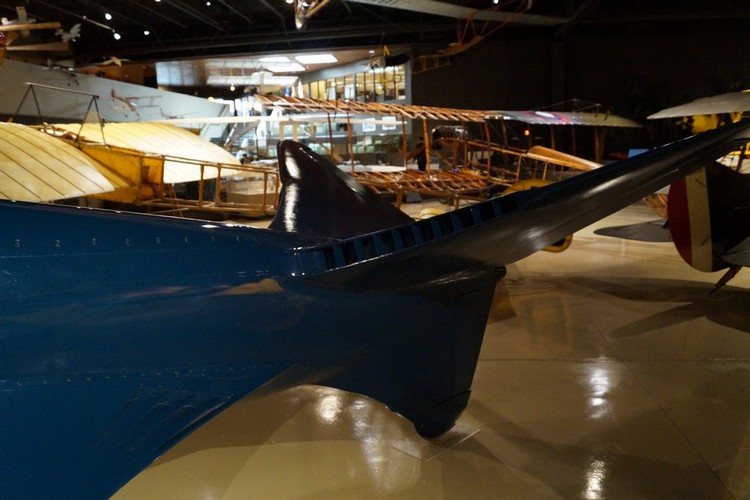
Air inlet in the tail surfaces and outlet in the trailing edge of the wing.
Tragically the Bugatti 100P airplane never flew, the Germans invaded Paris when it was about 95% ready. The airplane surprisingly survived the war, as it was hidden in a barn on the grounds of Bugatti’s estate just north of Paris. The airplane was bought by a French collector and sold to American Bugatti collector Ray Jones in the 1970’s who shipped the plane, the engines and many spare parts to the USA. French airplane museums were not interested. The plane less engines was later bought by Bugatti Collector the late dr. Peter Williamson who finally donated the plane and spare parts to the Experimental Aircraft Association, who restored the plane cosmetically. Since 1996 the airplane can be seen every day in the EAA museum in Oshkosh, USA. Both engines exist with the same owner in the UK, and were built into Bugatti race-cars.
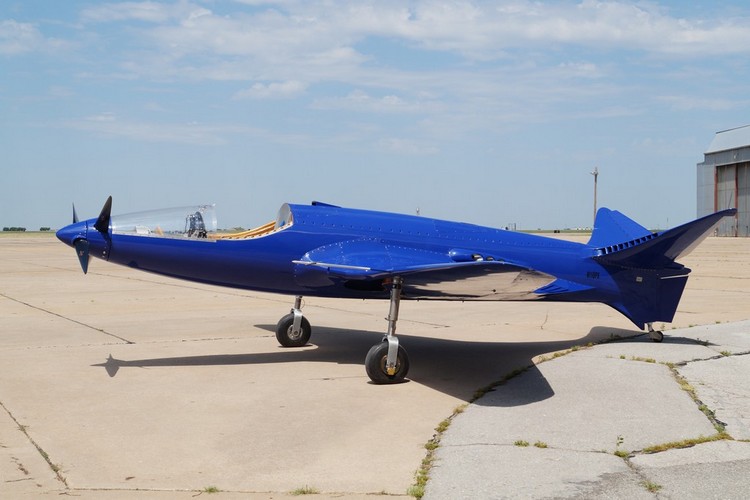
Replica airplane built by Scotty Wilson, only days before the first flight.
In 1997 the Bugatti Aircraft Association is founded by the author, focusing on increasing knowledge and interest in the Bugatti 100P airplane and related constructions. Final goal is to assist in the build of a replica airplane. Several people are interested in starting such a project but lack either time or money, or both.
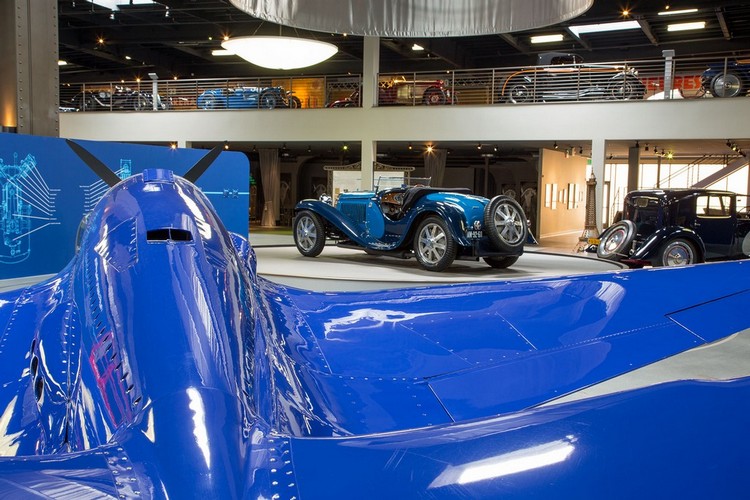
The replica Bugatti airplane with Bugatti T55 Roadster in the background. At the Bugatti exhibition in the Mullin museum in Oxnard, CA, USA in 2014.
In 2008 retired Airforce pilot Scotty Wilson from Tulsa, Oklahoma, USA starts thinking about a replica, and after some calculations and a lot of communication with the BAA, he starts building the fuselage in 2009. During the build there were a load of problems and of course the funds required were not always easy to get. To fund the gearbox in the nose, a successful fundraising project was started on Kickstarter. Finally the replica airplane, with two Suzuki Hayabusha 1.5 liter engines took off from the Clinton-Sherman airbase in Oklahoma on August 19, 2015. A second flight followed two months later, as the propellers were damaged after the landing of the first flight.
The third flight unluckily ended in disaster, as the airplane crashed to the ground within a minute of take-off, killing the pilot and destroying the airplane, which caught fire after impact. The exact cause for the crash has still to be established.

2nd flight of the Scotty Wilson Replica, October 17, 2015
|


